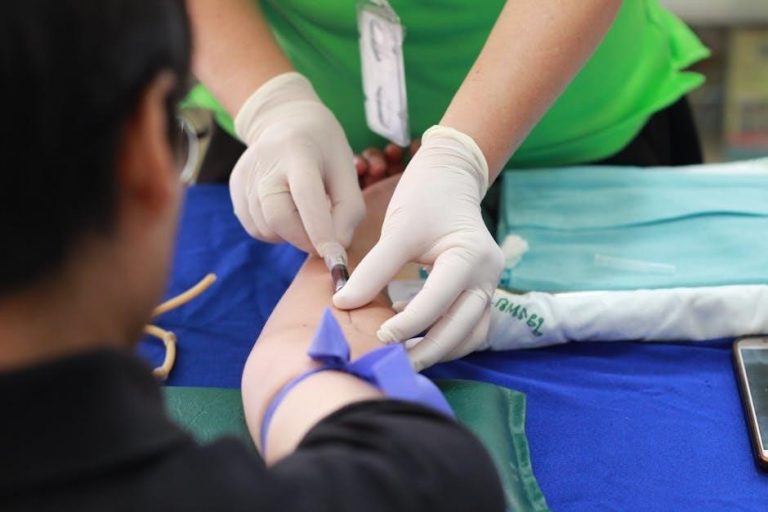Overview of the Importance of Structured Practices
Structured practices are essential for U14 soccer development, ensuring players progress systematically through age-appropriate drills and activities. A well-organized plan promotes skill mastery, teamwork, and tactical awareness. It keeps sessions engaging, maximizing player engagement and learning. Coaches can address specific needs, from technical skills to game scenarios, while maintaining a balance between fun and focused training. A structured approach also helps track player improvement and builds a strong foundation for future success in the sport.
Key Components of an Effective U14 Practice Plan
An effective U14 practice plan includes warm-up routines, technical drills, and small-sided games to enhance skills and teamwork. Adaptability is crucial, addressing issues like insufficient soccer balls by using ghost players. Coaches should ensure player engagement and adjust drills according to skill levels. Incorporating nutrition and hydration strategies supports overall performance. A structured plan ensures each session is productive, fostering improvement and enjoyment for young athletes.
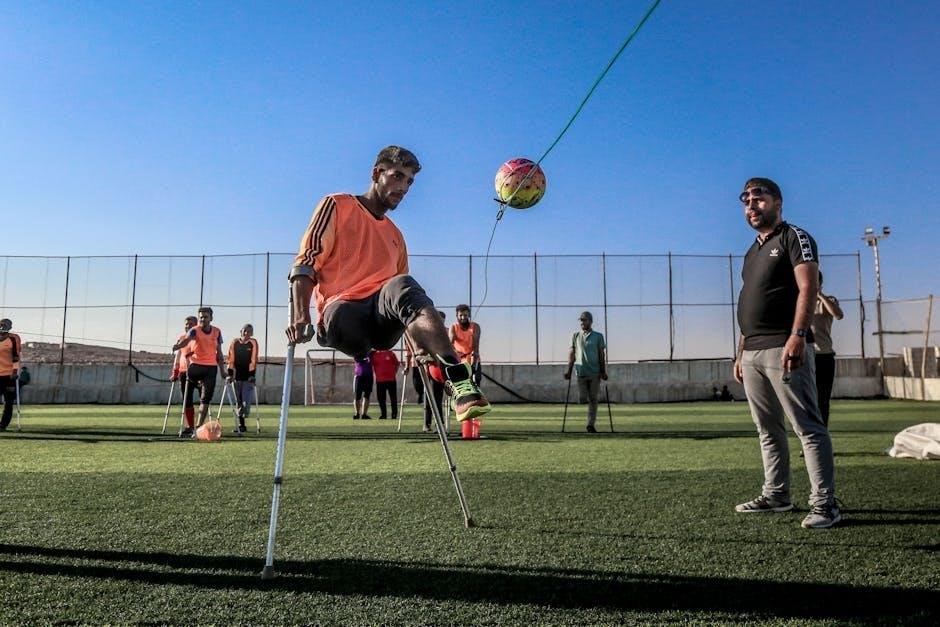
Warm-Up and Preparation
Warm-up and preparation are essential for injury prevention and performance. They include dynamic stretching, mobility exercises, and light ball work to prepare players physically and mentally for training.
Passing Warm-Up Drills
Passing warm-up drills focus on improving accuracy, movement, and decision-making. Players engage in short passing exercises, gradually increasing distance to enhance technique. Drills like one-twos and wall passes simulate game situations, fostering ball control and coordination. Coaches emphasize proper footwork and body positioning to ensure precise passes. These exercises also encourage communication and teamwork, preparing players for more dynamic practices ahead.
Dynamic Stretching and Mobility Exercises
Dynamic stretching and mobility exercises are essential for preparing young athletes for soccer practice. These exercises focus on active movements that improve flexibility, balance, and coordination. Players engage in activities like high knees, leg swings, and arm circles to increase blood flow and warm up key muscle groups. Mobility drills, such as carioca drills or ladder exercises, enhance agility and movement patterns. These exercises not only prevent injuries but also prepare players for the physical demands of the session, ensuring they are ready to perform at their best.
Ball Control Exercises
Ball control exercises are vital for developing a player’s ability to maintain possession and manipulate the ball effectively. Drills such as figure-eight runs, cone weaving, and dribbling through grids challenge players to use different surfaces of their feet. Activities like “Clean Your Backyard” encourage players to control and collect multiple balls, enhancing coordination and reaction time. These exercises are designed to improve precision, confidence, and decision-making under pressure. Incorporating small-sided games with a focus on ball control reinforces these skills in dynamic, game-like scenarios, preparing players for match situations. Positive feedback from coaches helps refine techniques and build mastery.
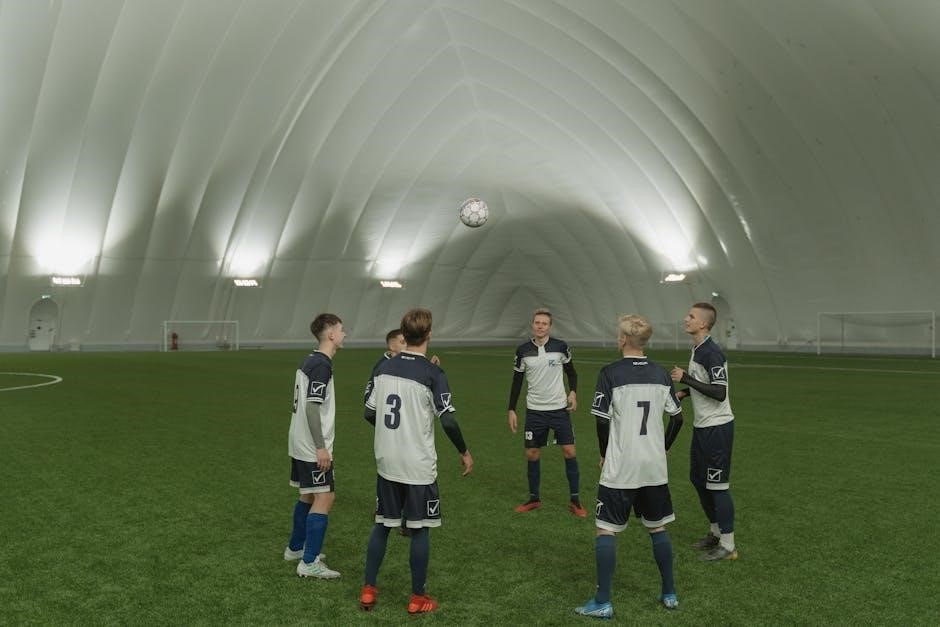
Technical Development Sessions
Technical development sessions focus on improving dribbling, passing, and receiving skills through structured drills. Activities like “Flying Numbers” and “Clean Your Backyard” enhance ball mastery and precision.
Dribbling Drills for Ball Mastery
Dribbling drills focus on enhancing ball control and confidence. Activities like “Flying Numbers” and “Clean Your Backyard” challenge players to maintain possession while navigating obstacles. These exercises promote precision, speed, and decision-making. Coaches can incorporate cone mazes and small-sided games to simulate game scenarios. Encourage players to use different parts of their feet and experiment with advanced moves, like step-overs and inside cuts. Progress drills by increasing difficulty as players improve. Positive feedback and repetition are key to developing mastery.
Passing and Receiving Techniques
Passing and receiving drills are essential for developing precision and teamwork. Start with short, controlled passes using the inside of the foot, progressing to longer distances. Incorporate “Flying Numbers” to simulate game-like scenarios, enhancing decision-making. Players should practice cushioning the ball with different parts of their body during receiving. Small-sided games like “Shrinking Field” encourage accurate passing under pressure. Emphasize proper technique, movement, and communication to build a cohesive unit. Structured drills ensure players master these fundamentals, preparing them for competitive play.
Heading and Volleys Practice
Heading and volley drills focus on improving aerial control and striking technique. Begin with basic heading exercises, using soft balls to ensure safety; Players practice heading in pairs, focusing on proper technique and control. Progress to volleys, starting with stationary balls and gradually introducing movement. Incorporate small-sided games like “Flying Numbers” to simulate game-like scenarios. Emphasize timing, precision, and confidence when striking the ball. These drills enhance both offensive and defensive skills, preparing players for competitive situations while prioritizing safety and proper form.
Tactical Development
Tactical development focuses on improving decision-making and teamwork through small-sided games, defensive organization, and attacking strategies, enhancing players’ awareness and coordination on the field effectively.
Small-Sided Games for Possession
Small-sided games, such as 3v3 or 4v4, are essential for developing possession skills in U14 players. These games encourage decision-making, teamwork, and spatial awareness. Drills like “Clean Your Backyard” and “Shrinking Field” focus on maintaining possession under pressure. Coaches can adjust game rules, such as reducing field size or adding neutral players, to challenge players. Emphasizing quick passes and movement fosters creativity and control. These exercises prepare players for real-game scenarios, improving their ability to retain and regain possession effectively during matches.
Defensive Shape and Organization
Defensive shape and organization are critical for U14 players to maintain compactness and protect against opponents’ attacks. Drills like “Shrinking Field” and “Capture the Ball” help players understand positioning and balance. Coaches emphasize staying goal-side, reducing space, and communicating effectively. These exercises improve decision-making and reaction time, ensuring players can quickly adapt to different defensive scenarios. Proper organization also enables seamless transitions from defense to attack, fostering a more cohesive team performance during matches.
Attacking Play and Movement
Attacking play and movement focus on creating scoring opportunities through coordinated runs and intelligent ball distribution. Drills such as “Flying Numbers” and small-sided games encourage players to exploit spaces and combine effectively. Emphasis is placed on off-the-ball movement, quick decision-making, and precise passing to break down defenses. These exercises help players develop the vision and confidence to execute attacking strategies seamlessly, leading to more effective and dynamic offensive performances during games.
Game Situations and Scenarios
Game situations and scenarios focus on preparing players for set-pieces, corner kicks, and penalty kicks, ensuring they can perform effectively in high-pressure match conditions.
Free Kicks and Set-Piece Strategies
Free kicks and set-piece strategies are crucial for U14 players to master, as they often decide match outcomes. Coaches should teach players to organize effectively, assign roles, and execute plays confidently. Attackers must create confusion for defenders, while defenders should maintain shape and protect the goal. Practices should include rehearsing various scenarios, such as direct and indirect kicks, to improve decision-making and precision. Regular repetition and feedback help players excel in these high-pressure situations, enhancing overall team performance.
Corner Kicks and Throw-Ins
Corner kicks and throw-ins are vital set-piece opportunities that demand strategic planning. Players should learn to position themselves effectively, creating attacking chances or securing defensive stability. For corners, attackers must time runs and head the ball accurately, while defenders should mark tightly and clear decisively. Throw-ins require quick decision-making to retain possession or launch counterattacks. Regular drills and repetition help players master these moments, turning them into game-changing scenarios. Coaches should emphasize coordination, communication, and precision to maximize success in these situations.
Penalty Kick Practice
Penalty kick practice is essential for developing confidence and precision in high-pressure situations. Players should focus on mastering technique, such as plant foot placement, ball striking, and follow-through. Goalkeepers benefit from training to read body language and react swiftly. Drills should include varying run-ups, shot placement, and diving techniques. Incorporate game-like scenarios to simulate match conditions. Coaches can also discuss mental strategies to stay calm under pressure. Regular practice helps players refine their skills and build consistency, ensuring they are prepared for crucial moments in competitive games.
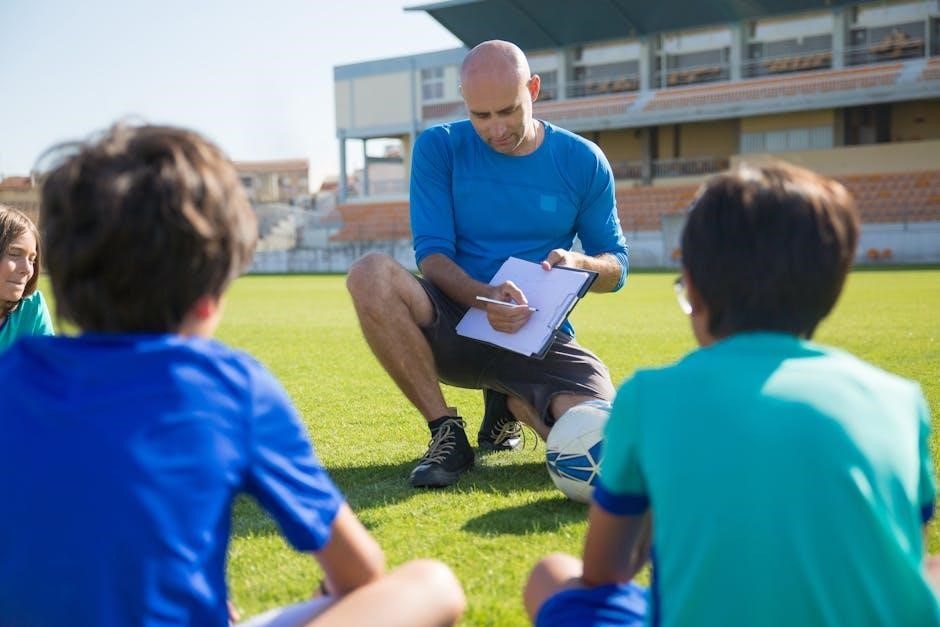
Conditioning and Fitness
Conditioning and fitness are crucial for U14 players, focusing on building speed, agility, endurance, and strength. Drills include sprints, ladder exercises, and interval training to enhance performance.
Speed and Agility Drills
Speed and agility drills are essential for U14 soccer players to enhance quick movements and sharp reactions. Ladder exercises, cone drills, and shuttle runs improve acceleration and deceleration. Players practice zigzag runs, rapid direction changes, and explosive sprints to build agility. Dynamic stretches and plyometric exercises are incorporated to increase flexibility and explosiveness. These drills simulate game-like scenarios, ensuring players can swiftly adapt to changing situations on the field. Incorporating these exercises regularly helps improve overall performance and readiness for competitive play.
Endurance and Stamina Building
Endurance and stamina-building exercises are crucial for U14 soccer players to maintain energy levels throughout matches. Drills include long-distance runs, interval training, and high-intensity interval sessions. Small-sided games with reduced breaks simulate match conditions, enhancing cardiovascular fitness. Players engage in shuttle runs and relay races to improve sustained effort. These exercises are designed to gradually increase stamina, ensuring players can perform at optimal levels during the entire game while minimizing fatigue. Coaches adjust drill intensity based on player fitness levels to promote safe and effective progression.
Strength Training Exercises
Strength training for U14 soccer players focuses on building muscle endurance and power through age-appropriate exercises. Bodyweight drills like squats, lunges, and planks target key muscle groups. Resistance bands can enhance upper body strength, while plyometric exercises improve explosiveness. Core stability workouts, such as Russian twists and leg raises, are also included to enhance overall athleticism. These exercises are designed to be low-impact and safe, ensuring young athletes build strength without overtraining. Coaches often incorporate these into practice plans to improve performance and reduce injury risks.
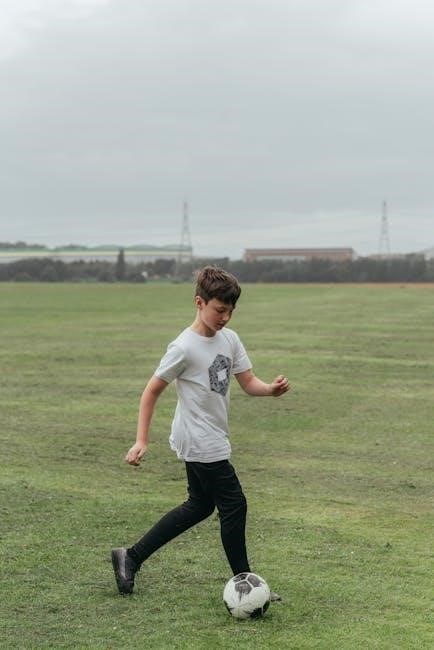
Teamwork and Communication
Teamwork and communication drills, such as Team Handball and Ball Tag, foster collaboration and verbal coordination among players, enhancing their ability to work together effectively during matches.
Team Handball and Ball Tag Games
Team Handball and Ball Tag games are engaging activities that promote teamwork, communication, and physical fitness. In Team Handball, players pass, shoot, and score using their hands, fostering coordination and strategy. Ball Tag encourages quick movements and tactical thinking, as players chase and tag each other. These games are designed to be fun and competitive, while also improving collaboration and problem-solving skills. They are ideal for U14 players, as they enhance teamwork and keep young athletes motivated and active during practice sessions.
Shrinking Field and Capture the Ball
Shrinking Field and Capture the Ball are dynamic team-based activities that enhance coordination, strategy, and physical fitness. In Shrinking Field, the playing area is gradually reduced, forcing players to think quickly and work together to maintain possession. Capture the Ball involves competing to gain control of a ball, promoting agility and tactical thinking. These games are highly engaging, fostering teamwork and problem-solving while keeping players active and motivated during practice sessions. They are particularly effective for U14 players, as they combine fun with skill development.
Team Coordination Exercises
Team Coordination Exercises are designed to improve players’ ability to work together seamlessly. Activities like Team Handball and Ball Tag encourage communication, spatial awareness, and collective problem-solving. These exercises foster trust and unity among players, essential for cohesive teamwork. By incorporating fun, competitive elements, they keep players engaged while enhancing their ability to anticipate and react to each other’s movements. Such drills are vital for developing a well-rounded, collaborative team dynamic in U14 soccer players.
Cool-Down and Review involves static stretching to relax muscles and a recap of key skills learned during practice, ensuring players retain information and stay motivated.
Static Stretching and Relaxation
Static stretching and relaxation are essential for young athletes to cool down after practice. Focus on major muscle groups like hamstrings, quadriceps, and hip flexors to improve flexibility and reduce muscle soreness. Hold each stretch for 20-30 seconds to maximize benefits. Incorporate deep breathing exercises to promote relaxation and mental calmness. This helps players transition smoothly from intense activity to a resting state, preparing their bodies for recovery and future sessions. Keep the atmosphere calm and encouraging to ensure a positive end to each practice.
Review of Key Skills and Tactics
A consistent review of key skills and tactics is crucial for player development. At the end of each practice, coaches should summarize the main focus areas, such as dribbling, passing, or defensive positioning. Encourage players to reflect on their performance and identify areas for improvement. Positive feedback and constructive criticism help reinforce learning and motivation. This structured review ensures players understand expectations and can apply skills effectively in future sessions. It also sets a clear foundation for progressing to more complex drills and game scenarios.
Positive Feedback and Encouragement
Positive feedback and encouragement are essential for fostering confidence and motivation in young players. Coaches should highlight individual and team achievements, emphasizing effort and progress. Specific, genuine praise helps players recognize their strengths and builds resilience. Encouraging a growth mindset allows athletes to view challenges as opportunities for improvement. Creating a supportive environment where every player feels valued enhances overall performance and team cohesion, making each training session more engaging and productive for all participants.
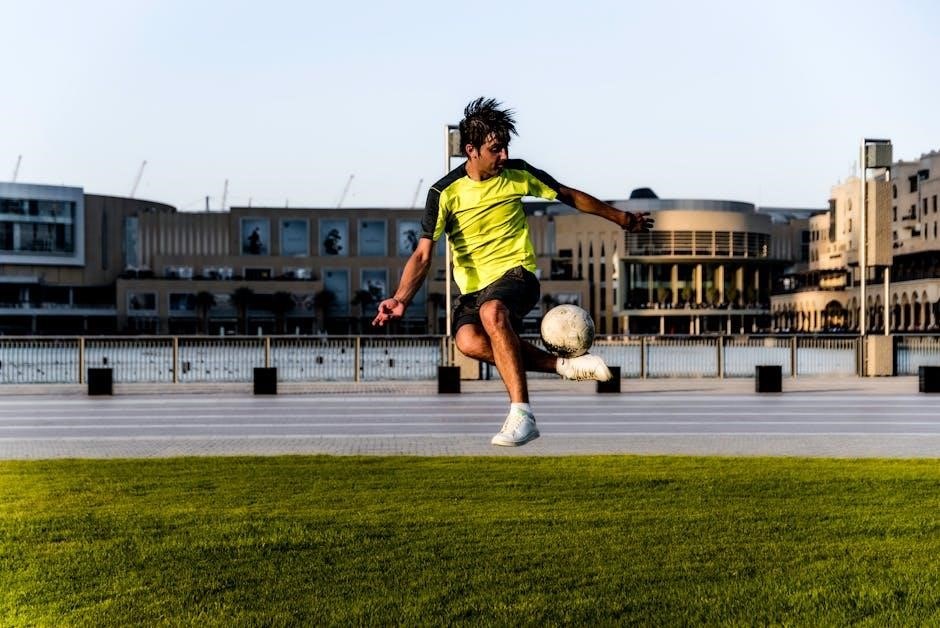
Nutrition and Recovery
Nutrition and recovery are vital for young athletes, ensuring proper fueling for performance and aiding muscle repair. Balanced diets, hydration, and recovery techniques like stretching and sleep support growth and peak performance.
Importance of Proper Nutrition for Young Athletes
Importance of Proper Nutrition for Young Athletes
Proper nutrition is essential for young athletes, providing energy, supporting growth, and aiding recovery. A balanced diet rich in protein, carbohydrates, and vitamins ensures optimal performance and muscle repair. Hydration is crucial to prevent fatigue and maintain focus during practices and games. Encouraging healthy eating habits helps young players develop strong bodies and minds, enabling them to perform at their best and reduce the risk of injuries. Nutrition education empowers athletes to make informed choices for long-term health and success in their sport.
Hydration Strategies
Hydration is vital for young athletes to maintain energy levels and focus during practices. Encourage players to drink water 30 minutes before practice and every 15-20 minutes during sessions. Monitor urine color; pale yellow indicates proper hydration. Avoid sugary drinks and remind athletes to rehydrate after practice. Coaches should emphasize the importance of water breaks and ensure access to water bottles; Proper hydration strategies help prevent fatigue, injuries, and heat-related illnesses, ensuring optimal performance and safety throughout training sessions.
Recovery Techniques for Optimal Performance
Recovery is crucial for young athletes to rebuild strength and prevent injuries. Post-practice, incorporate dynamic stretching and foam rolling to improve flexibility and reduce muscle soreness. Encourage players to refuel with balanced meals rich in protein and carbohydrates within 30 minutes of training. Adequate sleep (8-10 hours) is essential for physical and mental rejuvenation. Coaches can also introduce light cardio, such as jogging or swimming, to promote blood flow and aid muscle repair. These techniques ensure players recover effectively, maintaining peak performance levels throughout the season.
Handling Common Practice Issues
Common challenges include insufficient soccer balls, low player engagement, and varying skill levels. Solutions like using ghost players, rotating drills, and adjusting exercises ensure effective training for all.
Solutions for Insufficient Soccer Balls
If soccer balls are scarce, coaches can implement creative solutions. Use “ghost players” who participate without a ball, focusing on movement and spatial awareness. Rotate balls among players during drills, ensuring everyone gets touches. Incorporate activities like team handball or ball tag to reduce reliance on balls. Focus on non-ball exercises like dynamic stretching and agility drills; These strategies maintain engagement and productivity, even with limited equipment. Adaptability is key to ensuring effective training for all players.
Managing Player Attendance and Engagement
Encourage consistent attendance by fostering a positive team environment. Communicate practice expectations clearly and involve players in setting goals. Use positive reinforcement and constructive feedback to motivate. Rotate leadership roles to empower players and build confidence. Incorporate fun, skill-focused activities to maintain engagement. Address absences by checking in with families and ensuring all players feel valued. Create a culture of accountability and teamwork to maximize participation and enthusiasm during sessions.
Adapting Drills for Different Skill Levels
To ensure all players benefit, drills can be modified based on skill level. For less experienced players, simplify exercises by reducing complexity or space. For advanced players, increase difficulty with faster-paced or multi-tasking challenges. Use small-sided games to cater to varying abilities, allowing coaches to adjust rules or objectives dynamically. Provide clear instructions and demonstrations, and offer feedback to help players improve. This approach ensures inclusivity and progression for all athletes, fostering a balanced and productive practice environment.
Additional Resources
Access the Practice Plan Manual for comprehensive U14-U16 training guides, including drills, animations, and templates. Download sample plans and review further coaching materials for enhanced session preparation.
Recommended Drills and Exercises
Engage players with drills like “Clean Your Backyard” and “Flying Numbers” for ball control and agility. Incorporate small-sided games to enhance possession skills and teamwork. Technical development sessions should include passing, dribbling, and turning exercises. Progress drills from simple to complex, ensuring players master foundational skills before advancing; Utilize dynamic stretches and mobility exercises for injury prevention. Condition with speed and endurance drills tailored to U14 fitness levels. Encourage creativity and fun while maintaining focus on skill progression and teamwork development;
Sample Practice Plans and Templates
Downloadable U14 soccer practice plans offer structured sessions, covering technical and tactical skills. Twelve-week training programs include four progressive drills per session, focusing on ball control, passing, and agility. Templates provide detailed warm-up routines, small-sided games, and cool-down stretches. Coaches can access animations and diagrams for visual guidance. These resources are adaptable, allowing adjustments based on player progression and team needs. Use these plans to create engaging and effective training sessions tailored to U14 development.
Further Reading and Coaching Guides
Explore comprehensive coaching guides and methodologies for U14 soccer development. Resources include detailed manuals, video tutorials, and expert articles. Gain insights into creating seasonal plans, proactive coaching strategies, and possession-based training. Discover how to adapt drills for varying skill levels and manage common practice challenges. These materials offer valuable tools for enhancing team performance and fostering player growth, ensuring a well-rounded approach to youth soccer development.
U14 soccer practice plans provide a structured approach to skill development, fostering teamwork and tactical awareness. Consistent training enhances player growth and prepares teams for competitive success.
Effective U14 soccer practice plans focus on structured sessions that enhance technical, tactical, and physical development. Emphasizing passing, dribbling, and teamwork, these plans incorporate small-sided games, conditioning drills, and problem-solving scenarios. Proper nutrition, hydration, and recovery are highlighted for optimal performance. Coaches are encouraged to adapt drills to suit player skill levels and address common challenges, such as insufficient equipment. By fostering a positive learning environment, these plans help build well-rounded, confident players and empower coaches to deliver impactful training sessions consistently.
Final Tips for Coaches
Coaches should prioritize positive feedback, fostering confidence and creativity in players. Ensure practices are engaging, with varied drills to maintain focus. Communicate clearly and encourage teamwork. Adapt sessions to suit player skill levels and address challenges like equipment shortages creatively. Emphasize hydration, nutrition, and recovery for optimal performance. Provide opportunities for players to apply skills in game-like scenarios, promoting problem-solving and decision-making. End each session on a positive note, reinforcing progress and building morale for the next training session.

